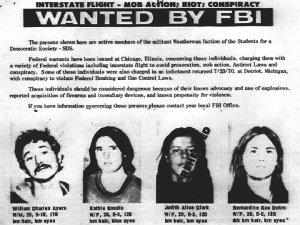After the dissolution of much of the Weather Underground, remaining members David Gilbert, Samuel Brown, Judith Alice Clark, and Kathy Boudin, formed a new organization titled, ” The May 19th Communist Organization”. In coalition with Wayne Williams, and Donald Weems, two senior members of “The Black Liberation Army”, a plan was set in action to rob a Brinks Armored truck, in Nanuet New York, carrying 1.6 million dollars in order to fund further militant activism.
The plan went into action at 3:55 p.m. at the Nanuet Mall, on October 20th 1981. Two brinks security guards Peter Paige and Joe Trombino, had just begun to load bags of money taken from the mall that day into their armored brinks truck. As they where loading this is when the members of the “Black Liberation Army”, and the newly formed “May 19th Communist Organization”, emerged from a nearby van and began to fire on the two security guards with shotguns and M16. All for mentioned members where present for the shooting except for Kathy Boudin, and David Gilbert, who were waiting in a U-haul truck in a nearby parking lot. Paige was killed instantly at the scene, and Trombino was severely injured, but managed to survive.
After taking the money and fleeing the scene in the original van, the two groups reconvened, at the U-Haul truck, and loaded the van into the back, to drive off. A college student who lived across the street, however witnessed the exchange and warned local authorities. Four police officers later spotted the truck, and pulled it over off the entrance ramp of New York State route 59. The officers where then confused if they had apprehended the right vehicle, with Boudin and Gilbert in the drivers seats. Both of whom did not match the description of any of the original assailants.
Feigning innocence Boudin, and Gilbert where able to convinve the officers to lower their weapons. As they did the remaining six members of the robbery sprung from the back of the U-Haul firing into the 4 officers. Officer Waverly Brown was instantly shot multiple times and dies at the scene. Officer Edwin O’grady, who was also hit died soon after in the ambulance the the hospital. The other two officers where injured. At this point the members of the robbery retreated back into the armored truck and fled the scene of the second shoot-out.
While fleeing though one of the remaining officers, Brian Lennon, shot the speeding U-Haul, catching it’s tire and causing it to collide with his police cruiser.
With U-Haul totaled, the assailants fled the scene, some leaving in the van in the back, others attempting to steal vehicles from nearby motorists. Kathy Boudin, attempted to flee on foot. Soon after the van carrying Gilbert, and Clark, during the high speed, getaway collided with a guard rail, and the two where soon apprehended. Another “May 19th Communist”, and former “Weather Underground”, member Marylin Buck was traced back to her home using the license plate off the Van, and was soon arrested. Boudin, Brown, and Weems, where soon arrested later. Finally in 1986, enough evidence was compiled to apprehend Williams.
Many have described the Brinks robbery as the last of the “Weather Underground”. The film “The Weather Underground”, describes the event as the unofficial end. The reasons behind this coincided with the fact that this was the resort of the few remaining members of the organization, to regain power. The event rested on the death of individuals, which earlier and more prominent tactics of the organization did not, causing the once semi-sound ideology of the movement to rupture. This break in ideology marked the end of the organization, and the beginning of new forms of activism.

